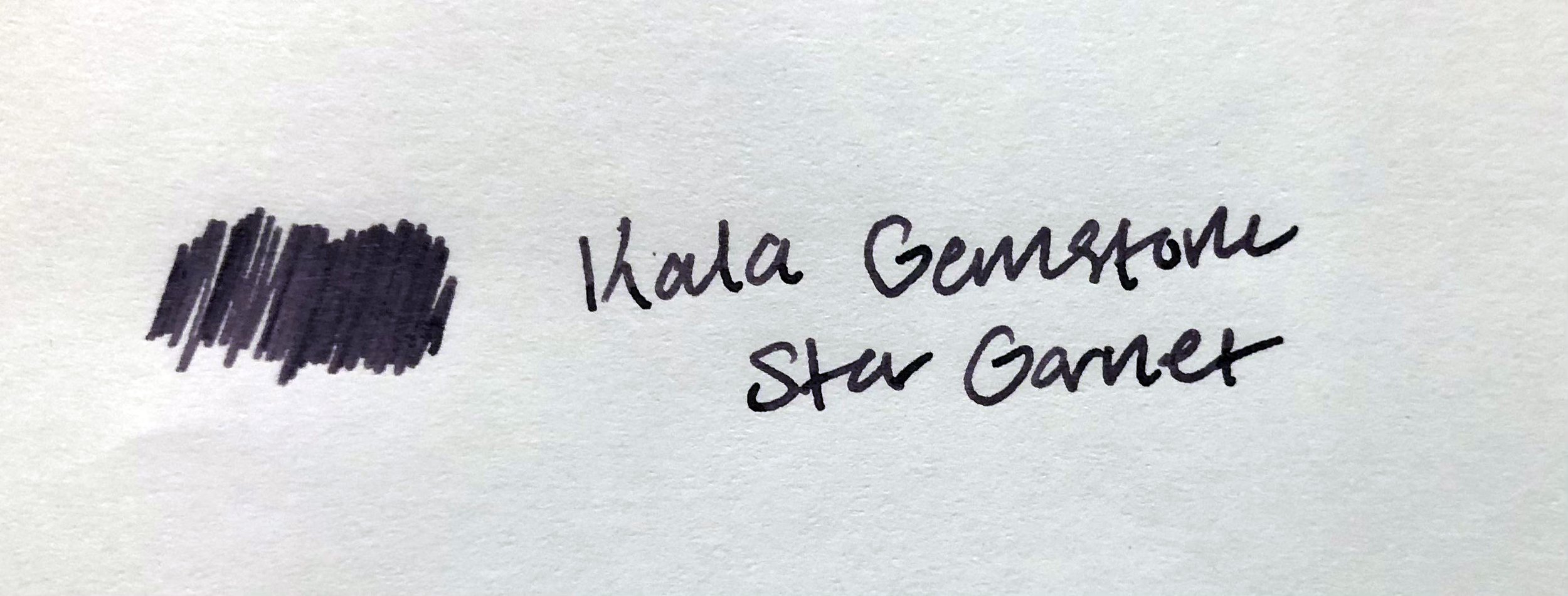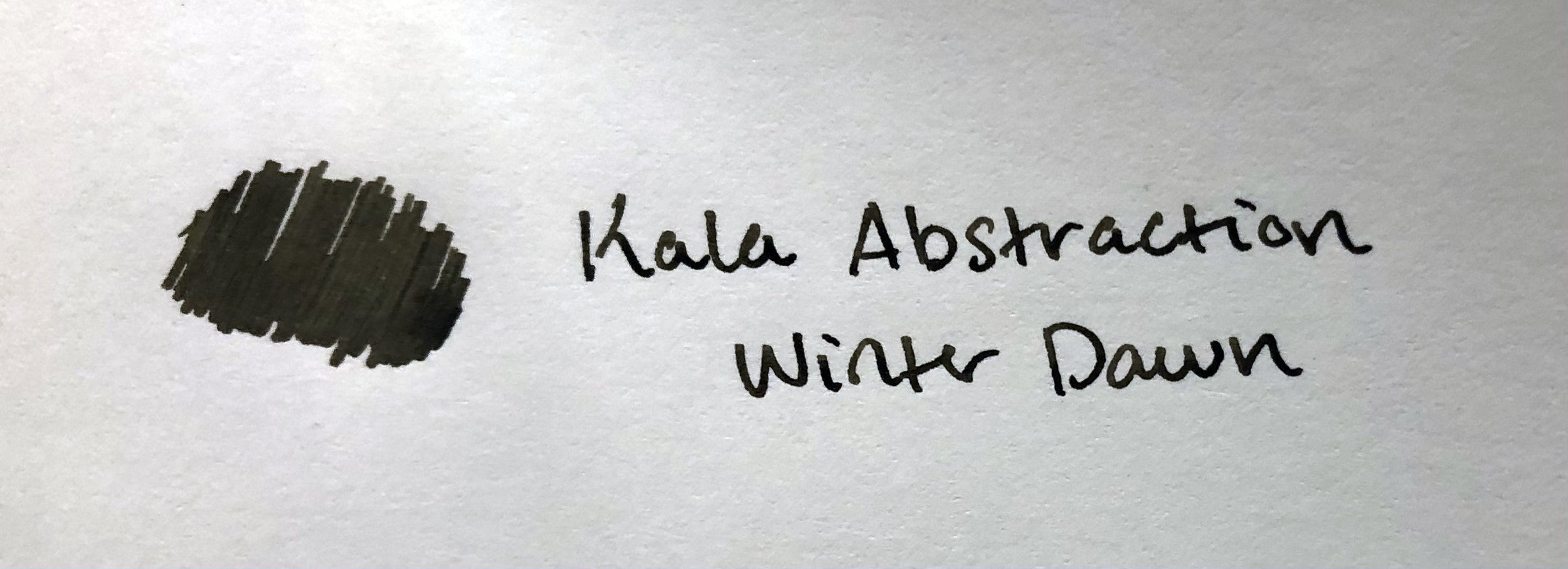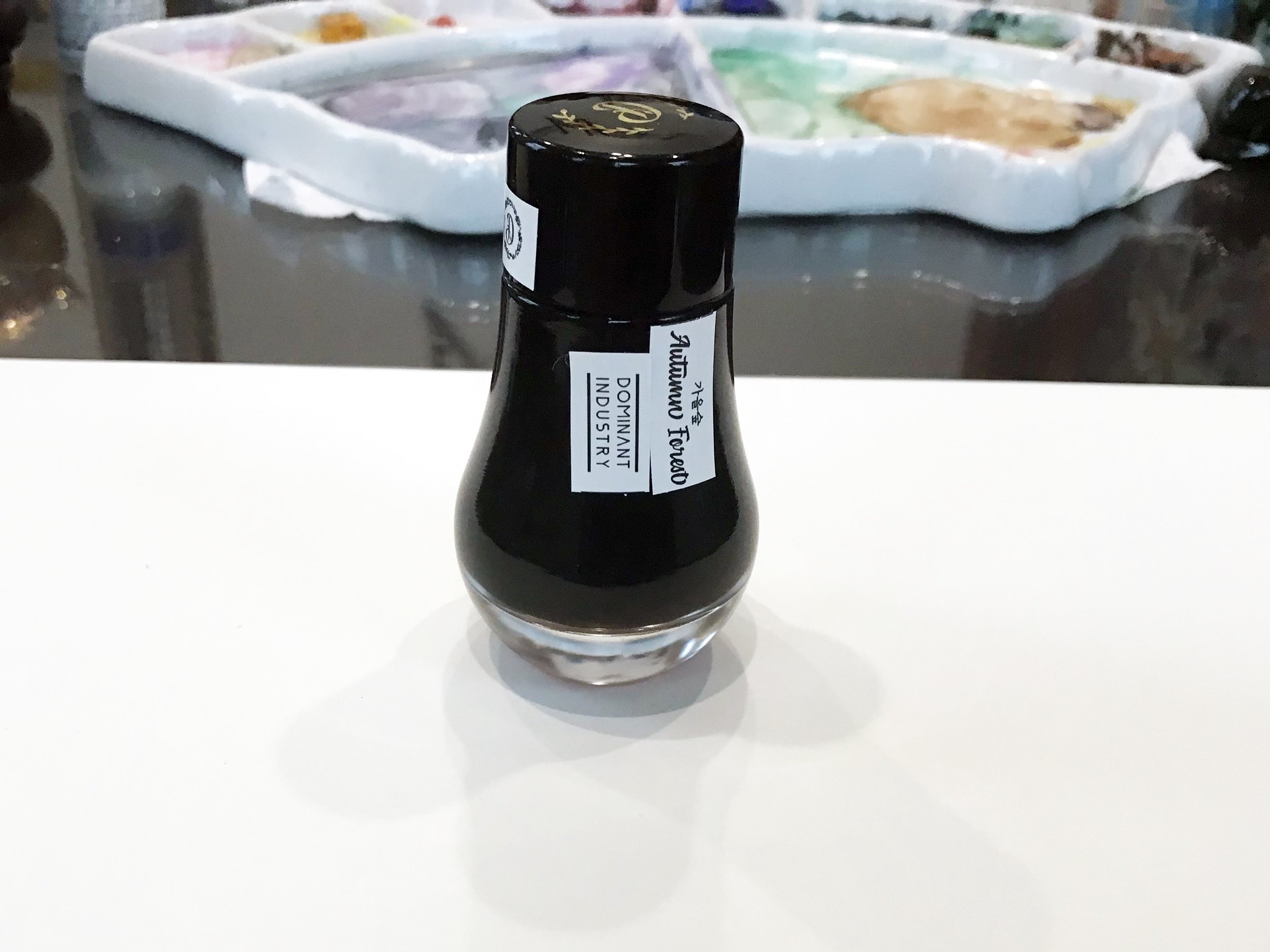Personalizing a Fountain Pen: Ink & Paper
BY JAMIE CHENG / JCCCW GANBARU INTERN
(Continued from “Flow of Culture: Fountain Pens in Japanese Stationery”)
Some of my favorite pens for taking notes and the inks they are filled with: the Pilot Vanishing Point in green carbonesque (called Capless in Japan), a half crosshatch Pilot Elite (called E95S in the US), and the Pilot Kakuno in clear. (Photo by Jamie Cheng)
There are lots of things to consider when using fountain pens, and each part works together to create a writing experience that sets them apart from other pens. Below, I’ve written details about two things (ink and paper) that every fountain pen user needs to know about.
Ink:
The ability to choose any ink color for your pen is probably one of the best things about fountain pens. No more basic blue, black, and red. Do you want royal purple, or sunset orange? Perhaps you want a teal that sheens red in the right lighting. Maybe that’s all too boring, and you want lavender with rose gold shimmer. Here, the world is truly your oyster.
All that being said, choosing the right ink can make or break your writing experience. Even if the pen is tuned perfectly to your liking, it still won’t write if you put the wrong ink in it. Be aware that many calligraphy inks and India ink are not compatible with fountain pens, and may destroy the pen. These are designed for use with dip pens, where they cling to the nib and adhere to the paper – they will not flow properly in a fountain pen and contain other additives that can permanently damage the pen.
When selecting an ink, decide what properties you would like your ink to have. Are you an artist who needs something waterproof and lightfast? Or are you someone who just wants lots of fun colors to play with? These factors will determine what kind of ink you should purchase. You should also consider if your pen is a wet or dry writer. In other words, does it tend to put down a lot of ink on the page, or does it feel like the ink is not flowing as well as it should be? For example, it may put down a thinner line that feels scratchy if the ink is too dry for the pen. Western nibs may benefit from a slightly drier ink due to their generous flow, while many Japanese pens are tuned dry and therefore perform better with wet inks. These preferences are reflected in many German and Japanese brands of ink, although there are exceptions. If you aren’t sure, it may take a little experimenting to find the ink that works best for you. Also keep in mind that properly cleaning your pen and using it often to avoid it drying out are some of the best steps you can take to ensure your fountain pens last a lifetime, especially when using high-maintenance inks.
Dye Ink:
Example of Pilot Iroshizuku dye inks in 20ml bottles. (Photo by Jamie Cheng)
This is the most common type of fountain pen ink you’ll find. The use of dyes allows for an infinite array of ink colors and properties such as sheen (when the ink pools and may appear to be a different color as you tilt the page) and shading (when the ink may appear lighter or darker at different spots as you write). Companies are experimenting with dual-shading inks that can give the appearance of two different colors while writing. These kinds of properties will show up best on less absorbent papers, such as those designed for use with fountain pens. While dye inks are abundant and the most readily available, they tend to fade in sunlight and wash away if water is applied. However, they are also the least likely to cause issues with your pen, and so are recommended for those just getting into fountain pens or who are not the best about keeping up with pen maintenance.
Examples of shading inks; the writing appears darker in places where the ink has pooled on the paper. The effect is more obvious in broader nibs. Written on Sakae Iroful paper. (Photo by Jamie Cheng)
An example of a sheening ink, where parts of the writing may appear to be a different color. Written on Tomoe River Paper. (Photo by Jamie Cheng)
Shimmer Ink:
Examples of shimmer inks. (Photo by Jamie Cheng)
Many people like the idea of being able to add some sparkle to their journals or other writing, and shimmer inks are a great way to do it. However, some care is required to avoid clogging your pens. Since shimmer is achieved by using small particulates, the ink should be used in pens with wetter flow and larger nib sizes. I personally have not had any issues with shimmer inks in sizes as small as a Western EF nib, but would hesitate to go any smaller. This can also depend on the brand. Before filling your pen, make sure to gently tilt the ink bottle back and forth until all the shimmer is suspended in the ink, or you may not get any shimmer in your pen. While you write, the pen may need to be rotated from time to time so that the shimmer is equally distributed as you write. Like with other inks, try to avoid letting the ink dry out in the pen, and consider putting shimmer inks in pens that are easily disassembled for cleaning. This will make your life much easier if a pen does get clogged.
Example of shimmer ink in the bottle. This is Dominant Industry’s Autumn Forest from their Pearl series
(Photo by Jamie Cheng)
The same bottle upside down; Dominant Industry’s Autumn Forest from their Pearl series. As you can see, the pink color is all of the shimmer that has settled on the bottom.
(Photo by Jamie Cheng)
Pigment Ink:
Pigment ink contains small particles, or pigment, in the ink that will adhere to the page. These inks may still contain a dye component that washes or fades away, leaving behind the pigment to ensure your writing is still legible. Others may only contain pigment and are therefore more likely to be completely waterproof. Pigment inks typically come in darker or muted colors, and it’s recommended that you do not allow the pen to dry out or else you may find that the pigment settles and clogs the feed. It may also stain demonstrator (transparent) pens, so keep that in mind if that is something that would bother you.


Iron Gall Ink:
Iron gall inks used to be the default ink before more modern ink formulas. It got its name from the small iron particles present in the ink, which allows it to become reasonably waterproof once dry. These inks have an interesting property – as the iron in the ink oxidizes, the color will appear to grow darker over a period of a few days. Older iron gall inks were highly acidic and could corrode pens over time. While modern ones are much gentler, it’s still recommended to clean out the pen often and avoid letting the ink sit in an unused pen for long periods of time. Using a gold nib pen rather than steel will help minimize potential risks, since gold will not corrode.
Document/Archival Ink:
Many of these inks are also pigmented, and are labeled this way to indicate their permanence. Artists or others who value this quality in their inks should keep an eye out for inks with these labels. These inks are typically lightfast and waterproof, making them ideal for watercolors or an extra layer of protection in the case of an accidental spill. Some of these inks are mixable within the same brand, allowing users to create their own colors.
Mixing Inks:
Making your own ink colors has become more popular lately, and most people will likely try it at least once in their fountain pen journey. Mixing colors together is simple enough – some basic color theory is all you really need. Some brands even offer sets of colors specifically so that you can mix your own favorite colors. If you want to use what you already have rather than purchasing more ink, I recommend always mixing a test sample and placing it in a small vial or other container and waiting a few days before placing it into your pen; especially if mixing different brands or lines of ink. Some inks have chemicals that will react badly if mixed, potentially ruining your pen or at the very least, creating an annoying mess. Mixing a new combination separately and waiting a few days will ensure that you can see any changes before putting it into your pen.
Finding the Right Paper:
When looking for paper to use with fountain pens, there are few things to keep in mind. Remember all of those different types of inks I just mentioned? You may not be able to see an ink’s unique qualities without the proper paper. Look for a coated paper if you want to see all that your ink has to offer. Coated papers are typically smoother to write on, but this is largely personal preference. A coated paper will not absorb as much of the ink, leaving it to dry directly on the paper’s surface and showing off all of its various properties such as sheen and shading. This can lead to longer dry times, so lefties beware if you are not an underwriter. Avoid papers that are too rough or have lots of little visible fibers, since these can snag or even clog the nib. You may need to keep a piece of spare paper under your hand if you notice feathering as you write - the oils in your hands can sometimes affect how the paper handles the ink.
Another common misconception is that thicker paper is better. For artists, this is often the case, but not so much with fountain pens. Papers designed for use with fountain pens can be very thin, and may have a lot of “ghosting” (where writing on one side is somewhat visible on the other side), but the ink should never bleed through. For example, one of the best papers for fountain pens, called Tomoe River Paper comes in 52gsm, which is much thinner than typical printer paper. It can handle even large splotches of ink without ever bleeding through the paper.
There is so much more that makes up the fountain pen hobby beyond the pens themselves. The variety of ink options and paper choices further encourage users to experiment with combinations and find what works best for them. Part of what enthralls fountain pen hobbyists is not just the process of writing, but the feel of the nib as it touches the paper, and watching the ink as it dries to reveal its true nature. Changing just one of these variables can result in a drastically different feel, allowing users to carefully tune their pens to their preference. The next article will feature all you need to know about fountain pens and basic maintenance tips, so keep a look out if you would like to learn more!
(Next article: “Personalizing a Fountain Pen: Nib, Filling Systems and Maintenance”)








